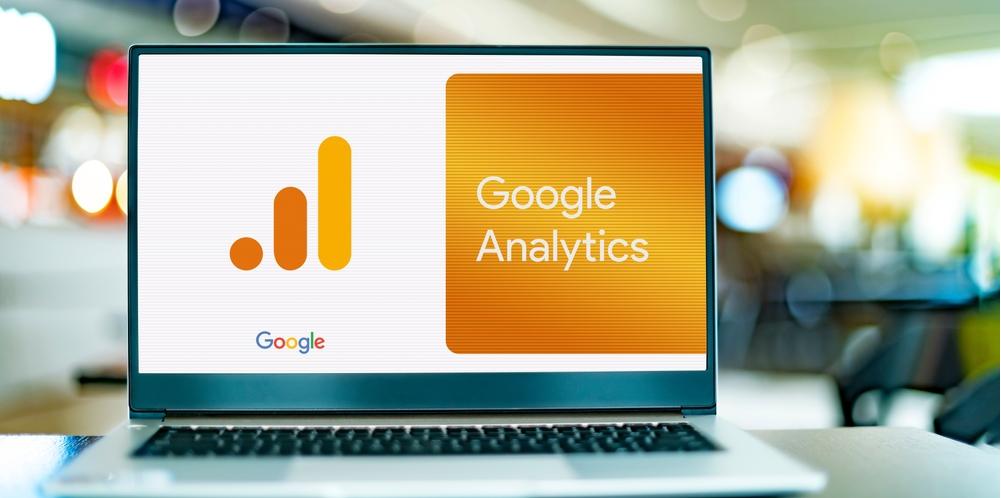
March 2022 saw Google announce that Google Analytics is set to change by 1 July 2023. The change will see the existing version of Google Analytics Universal (otherwise known as Universal Analytics) be overtaken by the new version, GA4. As part of this change, Google will drop tracking and support for Universal Analytics, which has been the standard reporting tool for millions of websites for over 10 years.
While the official retirement date of UA is 1 July 2023, the historical data will be accessible for a minimum of six months subsequently. Businesses don’t need to panic about rapidly switching from UA to GA4, but the sooner the GA4 transition takes place, the better. For instance, many companies rely on year-over-year (YoY) metrics that require undisrupted tracking, making a seamless transition to GA4 essential.
So, the Google Analytics switch to GA4 needs to be carried out quickly, but this isn’t to say it should be rushed. The switch from UA to GA4 is significant, meaning the platform needs to be explored in detail, and your business needs must be adequately assessed.
How is the transition different from the last GA platform change?
Before Universal Analytics, GA Classic was the platform of Google Analytics, and the transition between these programmes was simple. All this switch required was updating a website’s tracking code while the data, metrics, and interface all largely remained the same. The same can’t be said when switching from Universal Analytics to GA4.
How are GA Universal and GA4 different?
The changes made by Google in GA4 will require some adjustment, especially when considering the significant differences in:
- access to certain functionality and metrics (some metrics will become unavailable or may require a comprehensive setup)
- the ability to access and use YoY data
- the data itself
- the skillset needed for users
- the interface for navigating and creating reports
Essentially, GA4 is a re-imagination of how to monitor and assess website interaction. Switching to GA4 requires adjustments in training, skills, tools, processes, systems, and even a company’s annual budget to be successful.
Removed Functionality
Features of Universal Analytics, including content groups, custom metrics, and views, won’t be supported by GA4. Therefore, businesses that rely on these current features will need to find alternative means of filling measurement gaps.
Added Functionality
GA4 comes with multiple additional functions, one of them being a seamless connection to BigQuery. BigQuery is a wholly managed enterprise data warehouse that enables users to collect and analyse data. Currently, Universal Analytics users are required to export data via the enterprise version; however, GA4 will enable the export of data at no extra cost.
That said, the structuring of data in GA4 is vastly different to that of Universal Analytics. Consequently, the remapping of GA4 data may be required before migration into BigQuery. Upon doing so, structured query language (SQL) data can be gathered more efficiently.
New Measurement Models
Another big change of GA4 is the measurement models. Currently, Universal Analytics stands on a pageview- and session-based data model, while GA4 relies on an event-based model. As a result, any interaction in GA4 can be documented as an event. This differs greatly from all previous versions of analytics, where an event has its own hit type, label, category, and action. With GA4, there’s no label, category, or action; instead, each hit is an event and may (or may not) contain parameters.
These events are grouped into four categories including:
- Custom events
- Recommended events
- Enhanced measurement events
- Automatically collected events
Fresh Terminology
One more difference of GA4 is the terminology used. For instance, “Channels” has become “User Acquisition”, “Segments” has changed to “Comparisons”, and “Behaviour” is “Engagement”. Similarly, the “All Pages” reports are now called “Pages and Screens”.
What’s more, the “Audience” reports have been rearranged, and the information that used to be contained in this space now falls under new sections. These include “Acquisition” and “User” sections.
It goes without saying that navigating GA4 won’t be effortless; however, the platform will surely provide an array of benefits for businesses globally.
Re-imagined Reporting Interface
Last but not least is the starkest change between Universal Analytics and GA4: the reporting interface. GA4’s reporting interface is more efficient and simplified than that of Universal Analytics, thanks to certain reports, views, and metrics being replaced or removed. As a result, GA4 is set to be even more user-friendly than Universal Analytics.
What does this mean for your business?
Ultimately, Google Analytics’ platform shift means businesses will need to know just how to transition to GA4. This is essential for measuring website performance and reporting data, which is vital for almost every industry.
Navigating how to switch from UA to GA4 can be a tricky procedure, but i3MEDIA is here to help. Our team is well-equipped to measure website performance and report data using GA4, so you no longer have to. Contact us to discover how we can transform your digital marketing strategy with the help of GA4.